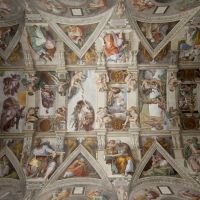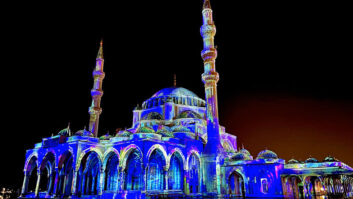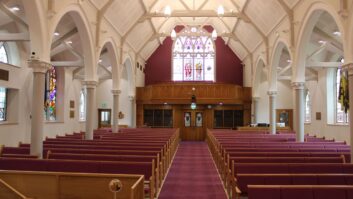
Osram’s LED lighting solution at the Sistine Chapel will allow greater illumination of the 500-year-old artwork while still preserving the important frescoes.
The lighting manufacturer Osram is equipping the Sistine Chapel in Rome with a new type of LED solution. After 500 years, Michelangelo’s outstanding frescoes can now be viewed to a level of precision unique hitherto impossible, as installation enables significantly higher illuminance values while still preserving the masterpiece. In addition, 60% less power is consumed compared to the existing lighting installation.
“Art presents the most demanding requirements on light,” said Peter Laier, Osram’s chief technology officer and executive board member responsible for the company’s general lighting business. “Following the unique lighting solution in the Lenbachhaus Museum in Munich, the world-renowned frescoes in the Sistine Chapel are now being subjected to the same extremely high lighting specifications.”
Around 7,000 LEDs will homogeneously illuminate the Sistine Chapel from next year onwards, enabling the world-famous works of art to be shown to greatest effect. The colour spectrum was custom-adapted on a scientific basis and with high precision to the colour pigments of the paintings, for example to the pigments in the Michelangelo frescoes.
The highly precise guiding of light ensures that the art is uniformly illuminated, and without glare for visitors. The luminaires are to be installed away from view below the windows to make sure that light is emitted in the same direction as the natural daylight. Until now, the art could only be seen insufficiently and according to the ingress of daylight, and limited by technological and conservational constraints.
The protection of the art works played an especially important role during the planning of the project, and the new LED solution is significantly gentler and more caring than all alternative artificial forms of light. Illuminance of approximately 50 to 100 lux (previously 5 to 10 lux) ensures that the art can be clearly discerned, but with as little ageing as possible.
In addition to the quality of the lighting, the new solution is also significantly more economic than the previous system. Although the level of illuminance could be increased many times over, power consumption for the lighting in the Sistine Chapel is expected to be reduced by more than 60%. The reason for this is not only the implementation of energy-saving LEDs but also the highly exact light planning that illuminates the chapel with high precision and completely without light spill.
This pilot project, with the working title of LED4Art, is subsidised by the European Subsidy Program for Information and Communication Technology within the Framework Program on Competitiveness and Innovation (PSP-CIP). The aim of the subsidy program is to demonstrate new possibilities for LED technology with regard to energy efficiency and improved quality of light, and thus to achieve more rapid market penetration for the new technology. In addition to the project coordinator Osram, other partners involved are the University of Pannonia in Hungary, the Institut de Recerca en Energia de Catalunya in Spain and the planning offices of Faber Technica in Italy.
www.osram.com







